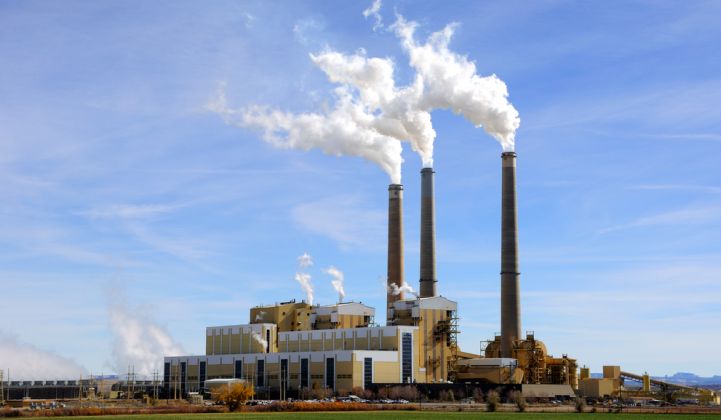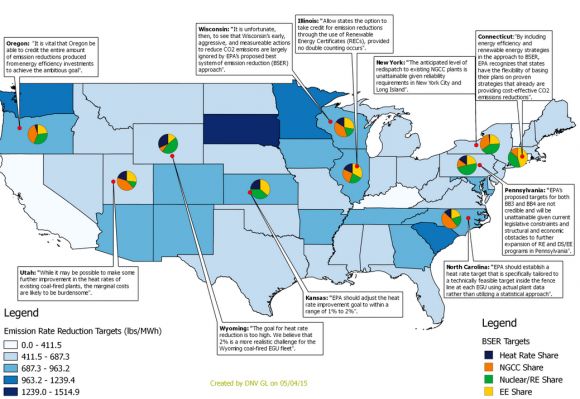The U.S. EPA is expected to release the highly anticipated Clean Power Plan next week. According to reports, the rule could be released as early as Monday, August 3.
The regulation will require the U.S. power sector to achieve deep emissions cuts, a pursuit that has received strong praise from environmentalists and stakeholders in the cleantech industry. According to the U.S. Energy Information Administration, renewable energy will see accelerated deployment under the Clean Power Plan (CPP).
The plan has also come under assault from Republican lawmakers in coal-heavy states, who contend that the rule will hurt the local industry and raise electricity rates on all consumers. A group of states unsuccessfully challenged the rule earlier this year, but more lawsuits are expected.
To help address some concerns, the EPA is planning to give states an extra two years before the compliance period kicks in, according to a timeline obtained by EnergyWire. However, the agency declined to confirm the findings in advance of the final rule.
Here's what we do know so far.
Overall, the CPP calls for a 30 percent reduction in carbon emissions from existing fossil-fuel-fired electric generating units by 2030. Figure 1 shows how forecasted emissions in 2030 differ with and without the CPP. We note that the CPP path shown in this figure is a glide path to 2030; interestingly, the currently proposed rule does not include explicit annual goals between 2020 and 2030.
FIGURE 1: Emission Reductions by 2030 Under the Clean Power Plan
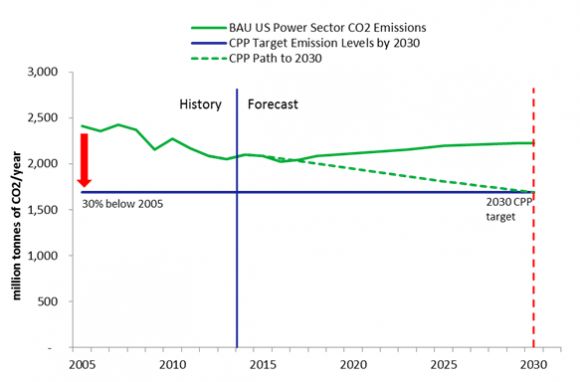
Reducing emissions associated with electricity generation is the fundamental goal of EPA’s proposal. The EPA has outlined emission reduction strategies to assist states in developing their implementation plans. Below we discuss how reduction plans may vary by state and the potential benefits and challenges of the various components in EPA’s strategy.
Overview of the Clean Power Plan’s four building blocks
Through the Clean Power Plan, EPA developed emission reduction targets for each state based on current emission levels and potential reduction capabilities determined through the EPA’s best system of emissions reductions (BSER) for CO2. The BSER used for section 111(d) of the CPP was based on four building blocks for emission reduction compliance: heat rate improvements from existing coal-fired facilities, increased dispatch of natural gas combined-cycle generation, increased generation from zero-carbon sources such as renewables and nuclear, and increased implementation of end-use energy efficiency.
We developed a roadmap for 111(d) compliance (Figure 2) that illustrates the path states and utilities may take in using the building blocks to meet their reduction targets. It is likely that energy efficiency will be the easiest and quickest building block to adopt; states with little to no energy efficiency activity can quickly implement programs using best practices from across the country, and other states with energy efficiency experience can add to their programs as an early step in their plan. We expect heat rate improvements will happen relatively quickly as well, since they only require retrofitting current facilities and not building new infrastructure.
Finally, we project that adding capacity from natural gas combustion-cycle plants and renewable and nuclear facilities will take the most time to implement due to permitting, construction, and interconnection requirements. Therefore, we anticipate energy efficiency and heat rate improvements can be implemented early in a state’s plan, whereas increasing capacity associated with natural gas, renewables, and nuclear may take longer to execute.
FIGURE 2: BSER Building Blocks -- Roadmap for 111(d) Compliance
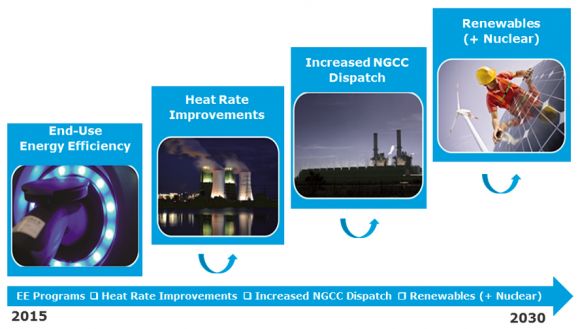
Each state is responsible for creating their own implementation plan (or coordinating plans with other neighboring states) in response to 111(d). We expect that each state will utilize one or more of these four building blocks in their plans, but ultimately, each approach has its own place in each implementation plan and will be highly state dependent.
State perspective on the four building blocks
EPA’s development of the state-specific targets involved different uses of the building blocks in each state; no single solution can be applied uniformly across the nation. Some states are expected to rely heavily on one or two building blocks, while EPA anticipated other states would need to use a mix of the building blocks in order to reduce their emissions. Figure 3 displays emissions rate reduction targets (in lbs./MWh) for all states, as well as EPA’s projections of each building block’s share in those reductions and official comments on the proposed rule from a selection of states.
Not surprisingly, states have varying opinions about the building blocks and the way they have been used to determine state targets. Specifically, states whose emission reduction shares for heat rate improvements in EPA’s BSER guidelines (such as Utah, Wyoming, and Kansas) have voiced concern with the projected level of those improvements. Likewise, states with relatively high nuclear and renewable energy shares in their projections (such as Pennsylvania) have also voiced concerns about those projections.
FIGURE 3: State Perspective on the Four Building Blocks
Click to enlarge
The journey of a thousand miles begins with a single step
States and utilities need to work together to develop and implement the most effective plan for their specific situations. However, as some of the reduction strategies included in the building blocks take years to implement, it is imperative that all stakeholders start the transition as soon as possible. We outline some of the selected benefits and challenges associated with EPA’s four building blocks for consideration in the following figure.
FIGURE 4: Benefits and Challenges of Building Blocks
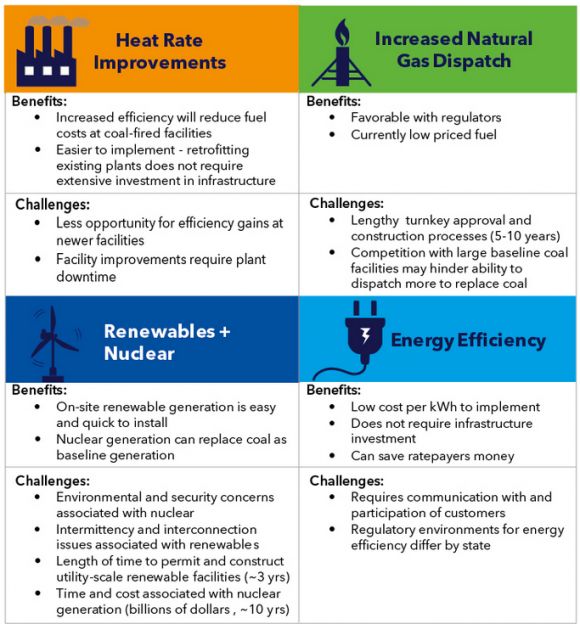
Meeting the emission reduction targets set by EPA may seem like an impossible task. However, the proposed rule calls for these reductions to occur by 2030, so the complete transition does not need to occur overnight.
EPA has set “interim goals” for smaller reductions to be achieved by 2020 (which, as noted above, could be pushed back to 2022), and constructing major new generation projects (i.e., NGCC, nuclear, and large-scale renewables) could take several years to complete, potentially placing their contribution to states’ final plans beyond 2020. On the contrary, design and implementation of energy-efficiency programs have much shorter timescales, indicating that energy efficiency may play a larger role in compliance plans before 2020.
Energy efficiency is not only the quickest building block to put into action; it is likely to be the most cost-effective as well. In Figure 5, we compare typical costs of different types of energy-efficiency programs with those of the other building blocks. Historically, successful energy-efficiency programs, such as residential lighting and commercial and industrial prescriptive programs, have the lowest lifetime costs per kilowatt-hour.
For states and utilities with little energy-efficiency program experience, initial costs to develop new programs will likely be higher than what is shown in the figure. However, experience from other jurisdictions suggests that program costs decrease after initial development. Nationally, a typical energy efficiency program costs roughly $0.16 per kilowatt-hour for the first year, but only $0.02 per kilowatt-hour over the program lifetime.
FIGURE 5: Cost per kWh for CPP Compliance Mechanisms
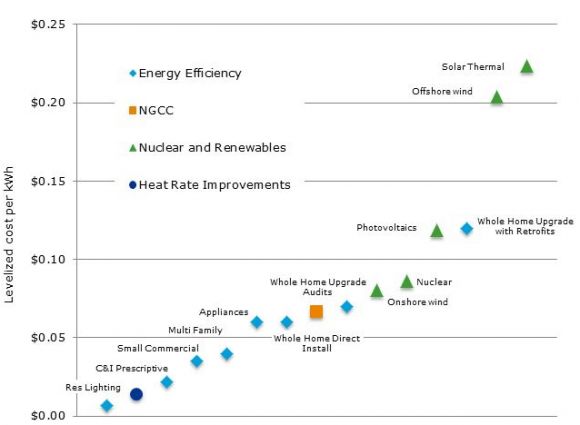
While establishing entirely new energy-efficiency programs to help states reach their emissions targets may seem difficult for utilities that have not previously invested in energy efficiency, it does not have to be. There are a number of vendors that provide turnkey energy-efficiency program services to utilities and states, enabling them to target the lowest-hanging fruit.
Lighting programs are a good example, as there are many states and utilities with extensive program history in this area. States and utilities may also coordinate across the entire country to define best practices and learn from previous program experiences. There is a well-established base in energy efficiency to work from to advance and support reaching the targets within the time frame proposed by EPA.
Conclusions
Although each building block has its benefits and challenges, state regulators, utilities and legislators will need to consider all options available in these building blocks when strategizing how to reach their targets by 2030. While reaching these targets may seem like an insurmountable challenge, states have the flexibility to design the implementation plan that works best for them and their utilities and customers. Utilities should be involved in developing these plans, as it is clear their cooperation and participation will be a crucial part of meeting these targets.
To learn more about what states and utilities are saying about 111(d) and find out how DNV GL sees the proposed regulations moving forward, please download our paper, Working Towards Compliance: Impact of EPA’s 111(d) on State Regulators and Utilities.
